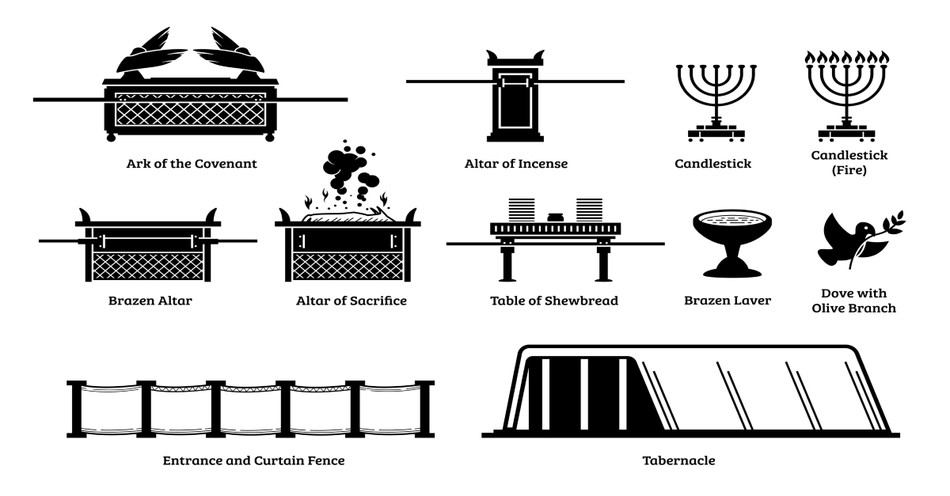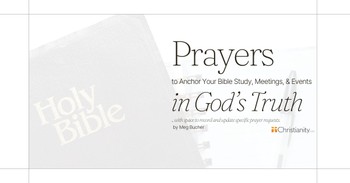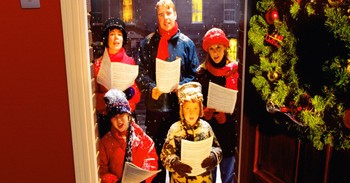In Exodus 27:2, Yahweh (literally written YHVH) told Moses to make a square altar of bronze-covered acacia wood for animal sacrifices. This altar had four corners, or horns, and sat in the courtyard. What was the purpose of this feature?
What Are the Horns of the Altar?
In Hebrew, this type of altar is called a mizbeach, related to the Hebrew noun zavach, for “sacrifice” and the verb meaning “to slaughter.” Zavach also means an offering or to prepare one for a higher purpose.
YHVH had Moses make the altar of incense in Exodus 30 similar to the mizbeach, only it had a gold overlay and sat in front of the veil to the Holy of Holies. Although this altar burned incense morning and night, it was still called a mizbeach or a Golden or Inner Altar. Rabbinical writings by Rabbi Elimelech of Lizhensk (1717-1786) explained this incense had the power to “slaughter” evil powers. The high priest made atonement on its horns once a year on Yom Kippur.
The Horns of the Altar and the Sacrifice
Qeren is the Hebrew word for horn and is interesting because, like most Hebrew words, it has more than one meaning. It can mean an animal horn, signify strength, refer to an instrument, and rays of light.
After the priest slaughtered the sacrificial animal on the altar, he smeared its blood on all four horns. Psalm 118:27 tells us, “the Lord is God, and he has made his light to shine upon us. Bind the festal sacrifice with cords, up to the horns of the altar!” (ESV, emphasis added). From this verse, we can see that they tied the animal down using a rope or cord to hold it in place to slaughter it. This seems barbaric in our day and time. But everything YHVH had them do had some significance.
Hebrews 10:4 says, “For it is impossible for the blood of bulls and goats to take away sins” (ESV).
The blood of an animal didn’t redeem them. As W.W. Wiersbe writes, The blood changed God’s relationship with them. The blood of a perfect animal allowed God to come near them.
The person presenting the lamb or goat as an atonement pushed their hands down on (as if to crush) the animal’s head, an act of transferring their sin to the animal. We see God do this in the following two verses.
Isaiah 53:5 says, “But he was wounded for our transgressions; he was crushed for our iniquities; upon him was the chastisement that brought us peace, and with his stripes we are healed” (ESV).
Isaiah 53:10 says, “Yet it was the will of the LORD to crush him; he has put him to grief; when his soul makes an offering for guilt, he shall see his offspring; he shall prolong his days; the will of the LORD shall prosper in his hand” (ESV).
So, what was the purpose of these horns and the blood smeared on them?
The four horns which the priest tied each limb of the lamb to represented Jesus’ death on a cross—He was bound to a cross with nails, crushed by His Father, and His hands and feet pierced for us.
The Horns of the Altar as a Crown
Most of us have seen a buck with antlers. The antlers are equivalent to its horns. When an eight or more-point antler rack circles the head of a deer, it appears as its crown. The more points a buck has not only represents its age but adds to its majesty and strength. So qeren also signifies strength.
Our English word for crown comes from the word qeren. The horns on the altar represented the design of a crown. Jeff A. Benner says, “In ancient times, a crown was made of “horns” and the pointed tips of the crowns we are familiar with today represent those horns.”
The Roman guards pressed the thorny crown onto Jesus’ head to both torture Him and mimic His rightful kingly title. But we see in the book of Revelation that Jesus wears many crowns because He is the king.
“Then I saw heaven opened and behold, a white horse! The one sitting on it is called Faithful and True, and in righteousness he judges and makes war. His eyes are like a flame of fire, and on his head are many diadems, and he has a name written that no one knows but himself” (Revelation 19:11-12 ESV, emphasis added).
Horns mentioned in Scripture have to do with power, similar to the king who wears a crown. Daniel 7, 8, and Revelation 17:12 refer to horns as the antichrist and those like him who rose in power and authority against YHVH and His people.
However, in Psalm 18:2 and Luke 1:68-69, we read that YHVH and Jesus are the horns of salvation. They are the strength and power of our salvation. There is no other way to be saved except by the person of Jesus Christ—His sacrifice provided everything we needed.
As we continue exploring the horns of the altar and Jesus, we see He was both the altar and sacrifice at once.
The Wood of the Horns of the Altar
YHVH had the altar, and most of the temple pieces, made from acacia wood. Israel didn’t have a lot of wood; therefore, most structures were stone. But as Brad Scott explains, acacia wood had certain properties that fit the pattern of the Messiah.
First, acacia wood grew deep roots and could thrive in dry ground. “For he shall grow up before him like a tender plant, and like a root out of a dry ground” (Isaiah 53:2a ESV, emphasis added).
Second, the acacia tree was unattractive. “He had no form or majesty that we should look at him, and no beauty that we should desire him” (Isaiah 53:2b ESV).
The Septuagint translated acacia as aphthartos or incorruptible. “For such a high priest was fitting for us, who is holy, harmless, undefiled, separate from sinners, and made higher than the heavens” (Hebrews 7:26 KJV, emphasis added).
Hebrews 5:8-10 says, “Although he was a son, he learned obedience through what he suffered. And being made perfect, he became the source of eternal salvation to all who obey him, being designated by God as a high priest after the order of Melchizedek” (ESV, emphasis added).
The Horns of the Altar and the Tabernacle
Within the tabernacle, Jesus represented the altar, sacrifice, and the High Priest. In Exodus 25:8-9, YHVH showed Moses the pattern from which he would build the tabernacle. The Hebrew word for “pattern” is tav’niyt which means pattern, form, likeness, or figure. Its action or verbal root is banah, the root word for son. Some believe YHVH showed Moses the real tabernacle, Jesus, while Moses was on the mountain.
As Craig John Lovik explains, the Hebrew word for “tabernacle” is mischan, spelled משבן. Reading right to left, the letters are mem, sheen, kaf, and nun. These Hebrew letters represent meaningful pictures. The first letter mem, מ, is defined as “comes down from heaven,” like water or rain. As we saw earlier, when mem joins with nun, ן meaning “life,” it spells manna, מן. Second is ש or shin. Characterized by teeth, it signifies destruction. Shin is spelled שן and represents the destruction of life or a sacrifice. Next is kaf and its picture describes a hand over the mouth, as in refusing to pass judgment. The word kaf is spelled כף and symbolizes atonement. The last letter nun is spelled וין and depicts “Life that gives life.”
Thus, within the word for tabernacle, we have:
- Manna: Comes down from heaven to give life.
- Mem: Comes down from Heaven
- Shin: Destruction of life or sacrifice.
- Kaf: Atonement.
- Nun: Life that gives life.
Jesus is the Tabernacle and the pattern Moses followed to build it. He is our horn of salvation and the lamb of God. He is the king of all.
Stephanie Pavlantos is passionate about getting people into God’s Word. She has taught Bible studies for twenty years and has spoken at ladies’ retreats. She is ordained with Messenger Fellowship in Nashville, TN. Stephanie works for Besorah Institute for Judeo-Christian Studies in the Student Services department as well as teaching online classes.
She is published in Refresh Bible study magazine, Charisma magazine, and CBN.com. She is also a contributor to www.VineWords.net, Feed Your Soul with the Word of God compilation by Lighthousebiblestudies.com, and Love Knots compilation by VineWords Publishing. You can visit her blog at www.stephaniepavlantos.com and other social media sites on Twitter (@DPavlantos) and Facebook.
Her Bible study, Jewels of Hebrews, placed third in the Selah Awards at Blue Ridge Mountains Christian Writers Conference (2021), and an Honorable Mention at the Florida Christian Writers Conference (2019).
Married for thirty years, she and Mike have three children, Matthew, Alexandria, and Michael. Stephanie loves animals and has dogs, ducks, sheep, and chickens.
This article is part of our Christian Terms catalog, exploring words and phrases of Christian theology and history. Here are some of our most popular articles covering Christian terms to help your journey of knowledge and faith:
The Full Armor of God
The Meaning of "Selah"
What Is Grace? Bible Definition and Christian Quotes
What is Discernment? Bible Meaning and Importance
What Is Prophecy? Bible Meaning and Examples



.jpg)
